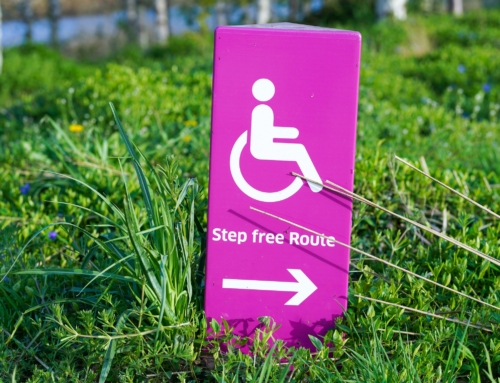This two part series, written by Chantal over a month ago, is very timely given the recent spotlight on ableism in the church due to an article published this week in the NY Times suggesting that churches drop their online services. For a more direct response to that article, we recommend Shannon Dingle.
This post is Part 2 of a series on Ableism in the Church. Read Part 1: Spiritual Trauma.
In this insightful episode of the podcast The Bible for Normal People the hosts explain why and how, ‘disability theology’ relates to everyone. They point out that “every theology has an adjective.” Every person reads the Bible through the lenses of their personal experience. No one is neutral and this is not necessarily a bad thing. Disability theology is typically viewed as a niche theology rather than theology for everyone. However it is important for this to reach majority culture to promote lasting structural and systemic changes that will encourage access and belonging for all.
Author, speaker and disability theology advocate Stephanie Tait shares her definition of Ableism: i.e., putting in barriers to access, or leaving them there, either intentionally or unintentionally; or assuming that the experience of disability is somehow less than, and people with disabilities would prefer not to be disabled.
She offers insight into the differences between structural/systemic Ableism, internalized Ableism, implicit Ableism, and explicit Ableism in a way that is easy to understand. She also shares practical ways to combat Ableism such as by diversifying the perspectives that you read or hear and taking in perspectives of some disabled theologians.
Tait assists pastors and church leaders, by shedding particular light on common pitfalls of ableist interpretations of healing narratives in Scripture. One such harmful message is that people with disabilities are more broken than other people, so Jesus needs to “fix” them. Stories of Jesus coming across people with ailments, illnesses, or what could be considered disabilities today and flippantly curing them can disenfranchise the experience of many disabled people if they are not interpreted carefully. Preaching the healing stories of the Gospels as prescriptive rather than descriptive can also be harmful as it may suggest that waiting for Jesus to cure people with disabilities is more holy than working toward universal accessibility.
In an effort to be supportive of families who experience disability, some churches may cause harm by conveying that people with disabilities should not accept themselves as they are but wait in expectation of a cure as a demonstration of faith. This belief may be explicitly conveyed through inscriptions like “waiting for healing” on accessible parking signs. More often a lack of acceptance is conveyed implicitly, such as by praying for someone to be cured without the person’s knowledge or permission. To make someone more like the majority, or to wish that they were, is not necessarily supportive or helpful.

Tait goes on to describe Jesus’ cultural lens and view of the necessity for a cure in the ancient society. In Jesus’ culture, having a disability not only represented physical or mental differences; it meant that you were not allowed to participate in social or religious life. The irony is that some gospel stories of healing which demonstrate Jesus’ endorsement of accessibility and belonging, are now used in ways that make people who are not cured feel like they don’t belong. Still, we should be confident that Jesus was not, and is not, ableist. He did not cure people strictly so that they could be physically or mentally ‘better.’ He cured them so that they could be in community with God and with each other. Following Jesus’ resurrection, he encounters Thomas and shows that his wounds still remain, by inviting Thomas to put his fingers in Jesus’ side. Through this Jesus demonstrates that it is possible to be fully glorified though not physically cured.
Tait laments how some churches lobbied for exemption from the Americans with Disabilities Act. She shares her frustration with the excuses that some churches use to evade improving accessibility for all, misappropriating scriptures which encourage good stewardship; suggesting that accessibility of churches need not be a priority given the relatively few members of the congregation that have disabilities. She cautions against this rationale because while some access needs are visible, many are not.
As many as 15% of the global population lives with some form of disability. In Canada and USA the proportion of the population that experiences some form of disability is believed to be as high as 20% and 26% respectively. You might think that you are serving only a small proportion of your congregation when working toward accessibility but in fact, you might be serving a relatively large proportion of the population.
Even if the statistics were less significant, accessibility should still be a priority considering that Jesus taught us to go out of our way to accommodate 1, rather than 99 sheep. Many churches do not make decisions which demonstrate that even one sheep matters. (If the problem is that you are not sure of how to make something accessible, one option might be to hire an accessibility consultant.)
By limiting himself to a human body on earth, Jesus demonstrated that true solidarity with people is costly. True solidarity might mean that rather than deferring to people with disabilities for all matters concerning accessibility and pretending to empathize, everyone asks, “is this accessible, and how?” In turn, they may refrain from events or activities that are not accessible whether or not they personally have access needs.
In what circumstances would you be willing to make such a costly show of solidarity with people who have disabilities?


